Volume 9, Issue 4
Displaying 1-14 of 14 articles from this issue
- |<
- <
- 1
- >
- >|
-
2009 Volume 9 Issue 4 Pages 492-496
Published: March 01, 2009
Released on J-STAGE: March 16, 2011
Download PDF (1188K) -
2009 Volume 9 Issue 4 Pages 497-503
Published: March 01, 2009
Released on J-STAGE: March 16, 2011
Download PDF (1008K) -
2009 Volume 9 Issue 4 Pages 504-510
Published: March 01, 2009
Released on J-STAGE: March 16, 2011
Download PDF (1524K) -
2009 Volume 9 Issue 4 Pages 511-518
Published: March 01, 2009
Released on J-STAGE: March 16, 2011
Download PDF (1356K) -
2009 Volume 9 Issue 4 Pages 519-523
Published: March 01, 2009
Released on J-STAGE: March 16, 2011
Download PDF (1827K) -
2009 Volume 9 Issue 4 Pages 524-527
Published: March 01, 2009
Released on J-STAGE: March 16, 2011
Download PDF (549K) -
2009 Volume 9 Issue 4 Pages 528-534
Published: March 01, 2009
Released on J-STAGE: March 16, 2011
Download PDF (2503K) -
2009 Volume 9 Issue 4 Pages 535-540
Published: March 01, 2009
Released on J-STAGE: March 16, 2011
Download PDF (1853K) -
2009 Volume 9 Issue 4 Pages 541-545
Published: March 01, 2009
Released on J-STAGE: March 16, 2011
Download PDF (2200K) -
2009 Volume 9 Issue 4 Pages 546-551
Published: March 01, 2009
Released on J-STAGE: March 16, 2011
Download PDF (862K) -
2009 Volume 9 Issue 4 Pages 552-557
Published: March 01, 2009
Released on J-STAGE: March 16, 2011
Download PDF (832K) -
2009 Volume 9 Issue 4 Pages 558-561
Published: March 01, 2009
Released on J-STAGE: March 16, 2011
Download PDF (691K) -
2009 Volume 9 Issue 4 Pages 562-565
Published: March 01, 2009
Released on J-STAGE: March 16, 2011
Download PDF (536K) -
2009 Volume 9 Issue 4 Pages 566-570
Published: March 01, 2009
Released on J-STAGE: March 16, 2011
Download PDF (1985K)
- |<
- <
- 1
- >
- >|
